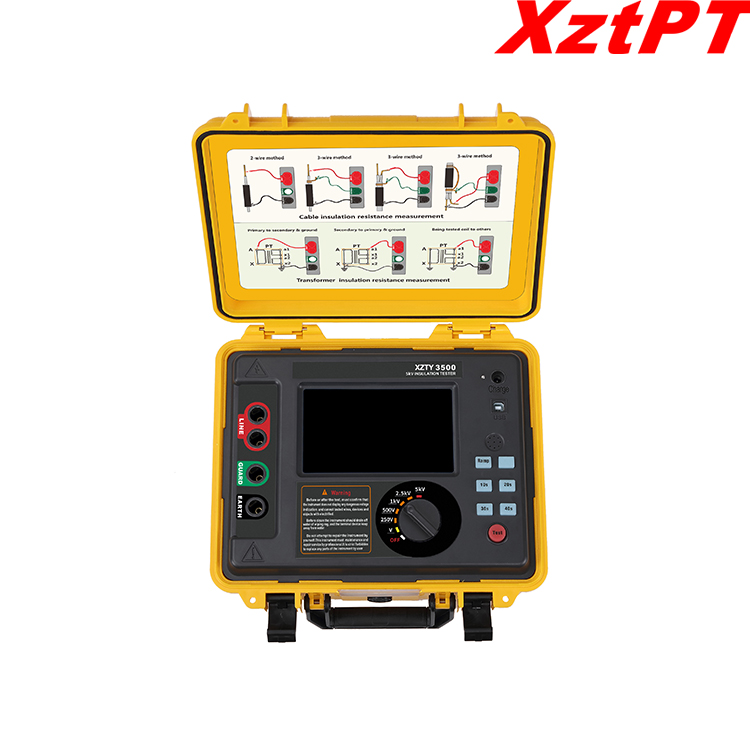English




The testing principle of insulation resistance tester (also known as megohmmeter, shake meter) is based on Ohm's law (R=V/I), which calculates the resistance value of insulation material by applying DC high voltage and measuring leakage current, in order to evaluate its insulation performance. The following is a detailed analysis of its core principles:
1. Core principle: Application of Ohm's Law
The insulation resistance tester applies a stable DC high voltage (common voltage levels: 250V, 500V, 1000V, 2500V, etc.) to the object being tested (such as cables, motor windings, or transformers). At this point, a weak leakage current (usually at the nanoampere level) will be generated in the insulation material. The instrument calculates the insulation resistance value (usually in megaohms, M Ω) by measuring the current value (I) and combining it with the applied voltage (V) using the formula R=V/I.
Why use high DC voltage?
Direct current voltage can avoid interference from the capacitance effect of alternating current, while high voltage can simulate the electric field strength under actual working conditions, exposing the leakage path caused by insulation defects such as cracks, moisture, and aging.
2. Key steps in the testing process
Power outage and discharge: Before testing, it is necessary to ensure that the tested equipment is completely powered off and discharge residual charges to prevent electric shock or measurement errors.
Apply high voltage: Select the test voltage based on the rated voltage of the equipment (refer to standards such as GB 50150-2006)
Measurement and Calculation: The high-precision current sensor inside the instrument detects leakage current, and the digital processing circuit calculates the resistance value in real time and displays it.
Safety protection: The tester limits the output current (usually<5mA) and is equipped with overvoltage, overcurrent protection, and automatic discharge functions to ensure safe operation.
3. Core components and functions of the instrument
High voltage generator: Provides stable DC voltage (traditional shaking meters rely on hand cranking to generate electricity, while digital ones use battery power).
Current detection system: High sensitivity circuit measures small leakage currents (as low as 0.1nA), ensuring a wide range (0.1M Ω -10T Ω).
Intelligent analysis function:
Polarization index (PI): 10 minute resistance value/1-minute resistance value, evaluating the degree of insulation moisture absorption.
Absorption ratio (DAR): 60 second resistance value/15 second resistance value, quickly determining insulation aging.
Shielded terminal (Guard end): eliminates surface leakage interference and improves high resistance measurement accuracy (such as>1G Ω).
4. Key factors affecting measurement
Environmental temperature and humidity: Excessive humidity can reduce insulation resistance (water molecules conduct electricity), and an increase in temperature may accelerate ion movement, leading to a decrease in resistance.
Testing time: Capacitive devices (such as long cables) need a long time to reach a stable current value.
Surface pollution: Oil stains and dust may form a leakage path, and it is necessary to clean the tested surface or use shielded terminals.
XZTY3500 High Voltage Insulation Resistance Tester
